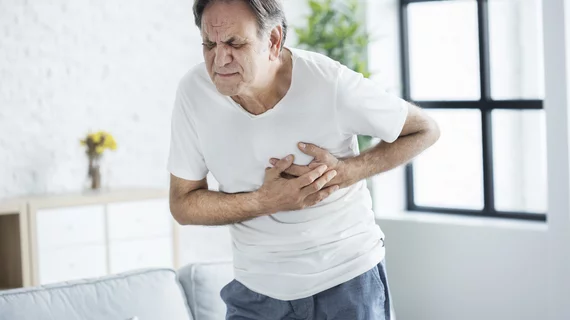Antioxidant apocynin cuts risk of repeat heart attack, stroke
Heart attack and stroke patients could minimize their risk of a second infarction by consuming apocynin, an antioxidant close in chemical structure to vanilla, according to research out of Portland, Oregon.
Jonathan R. Lindner, MD, a professor of cardiovascular medicine at Oregon Health & Science University School of Medicine, led the study, which explored the utility of apocynin in reducing the risk of a repeat myocardial infarction or stroke in mouse models. Lindner and colleagues at OHSU, the Scripps Research Institute and Bloodworks NW published their findings in the Journal of the American College of Cardiology.
“After MI, the risk for stroke or recurrent MI from nonculprit lesions is increased by several-fold over the ensuing 6 to 12 months,” Lindner et al. wrote in JACC. “These findings indicate that a focal ischemic event can lead to systemic adverse vascular responses.”
Those responses typically involve an overproduction and mobilization of inflammatory Ly-6C monocytes and myeloid cells, the authors said, which contribute to unstable plaque buildup along the inner linings of a patient’s arteries and, eventually, another CVD event. Some chemicals—like apocynin—are being studied as possible remedies.
For their trial, Lindner and his team treated mice who’d had previous heart attacks or strokes with apocynin. Using contrast-enhanced ultrasound molecular imaging and intravital microscopy, the researchers found the antioxidant cut plaque buildup in half and returned mice’s inflammation levels to pre-attack rates.
“Interrupting the endogenous vascular production of reactive oxygen species with the Nox inhibitor apocynin suppresses adverse remote endothelial changes,” the authors said. “Our findings help clarify the mechanisms for heightened risk for recurrent events after MI, and reveal potentially modifiable processes. They could also contribute to the mechanistic understanding of the recently described beneficial effects of proinflammatory cytokine inhibition in patients with MI.”
The team said their study’s greatest limitation was the fact that it can’t be directly applied to human models—at least not yet.
“Future research should examine inhibition of systemic inflammatory processes that promote endothelial adhesiveness and platelet-endothelium interactions to reduce recurrent ischemic events after MI,” they wrote.

